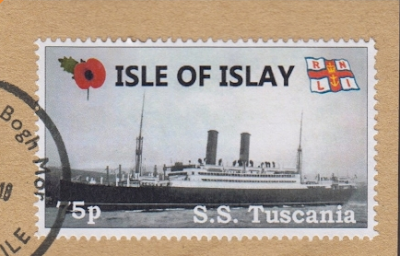The SS Tuscania was a British ocean liner that was torpedoed and sunk by a German submarine during World War I. The incident occurred on February 5, 1918, off the coast of Ireland.
Key points about the sinking of the SS Tuscania:
Role in World War I: The SS Tuscania was part of the troopship convoy carrying American soldiers to the Western Front during World War I. The ship was en route from New York to Liverpool.
German U-boat Attack: On the night of February 5, 1918, the German submarine UB-77, commanded by Kapitänleutnant Wilhelm Meyer, targeted the convoy in the North Channel between Ireland and Scotland. The submarine fired torpedoes at several ships, including the Tuscania.
Torpedo Impact: One of the torpedoes struck the SS Tuscania, causing significant damage. The ship began to sink, and chaos ensued as the crew and passengers, including American troops, attempted to abandon ship.
Rescue Operations: The rescue efforts were challenging due to rough seas and darkness. British and American naval vessels, as well as local fishing boats, participated in the rescue operations, saving many lives.
Casualties: While the majority of the passengers and crew were rescued, there were casualties. Approximately 210 individuals lost their lives, including both crew members and American soldiers.
Impact on the War: The sinking of the SS Tuscania was one of several incidents during World War I that involved the sinking of passenger ships carrying civilians and military personnel. Such events contributed to the broader context of unrestricted submarine warfare and influenced public opinion regarding the war.
The sinking of the SS Tuscania highlighted the dangers posed by German U-boats during the war and underscored the vulnerability of civilian and military vessels in the maritime conflict zone.

No comments:
Post a Comment